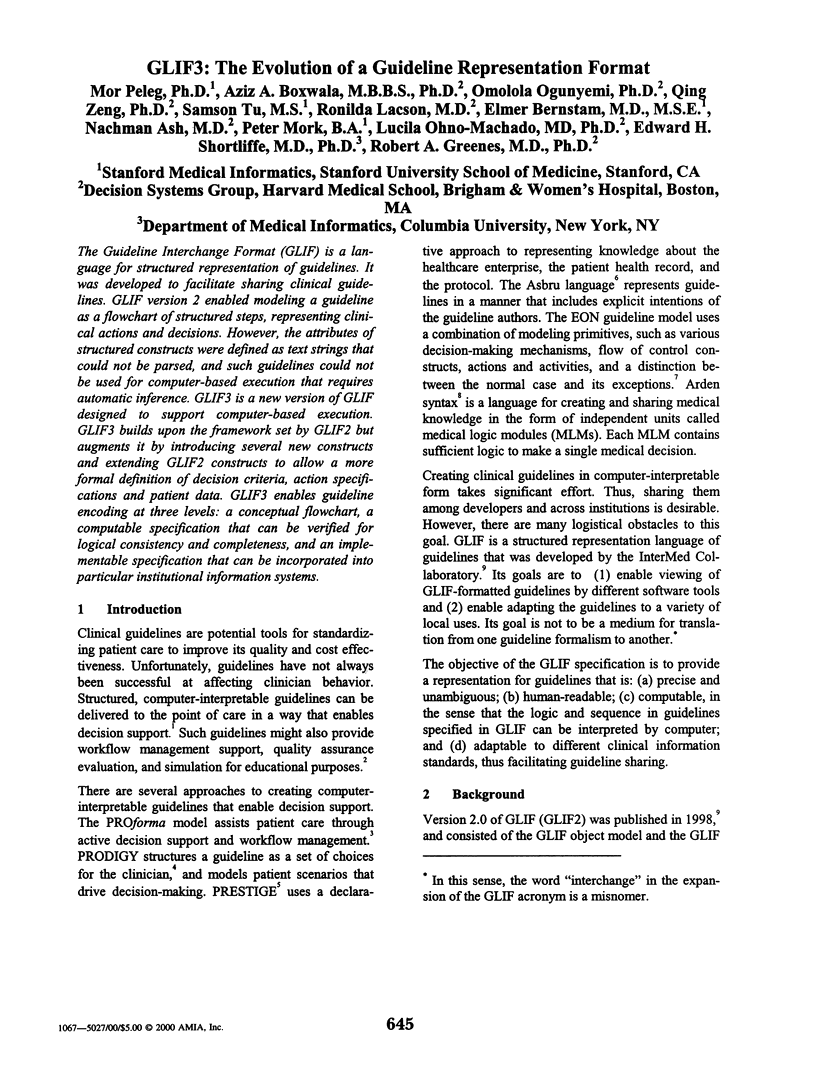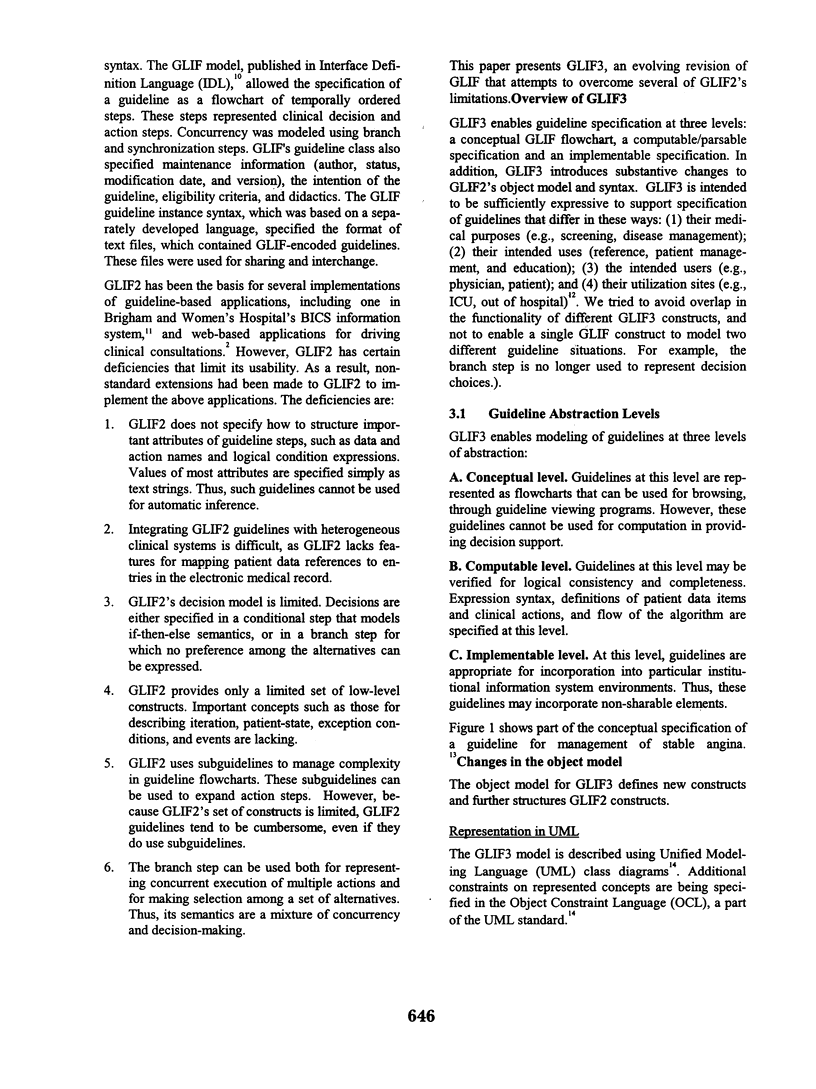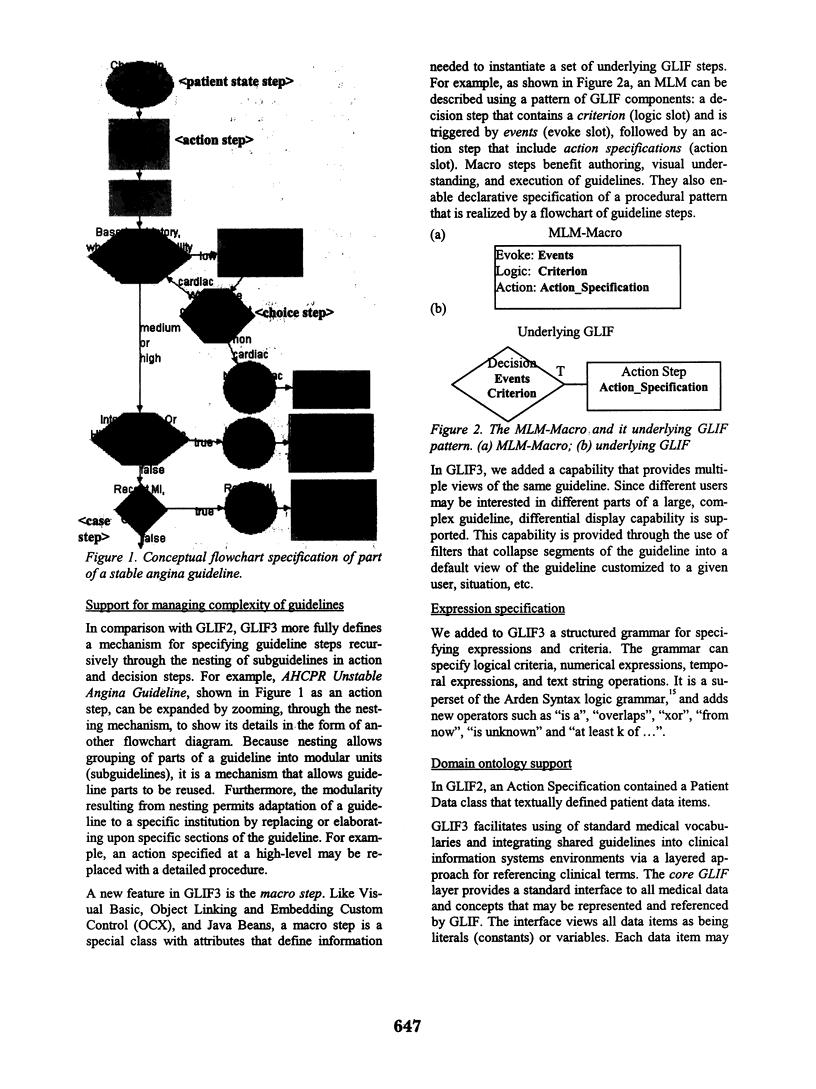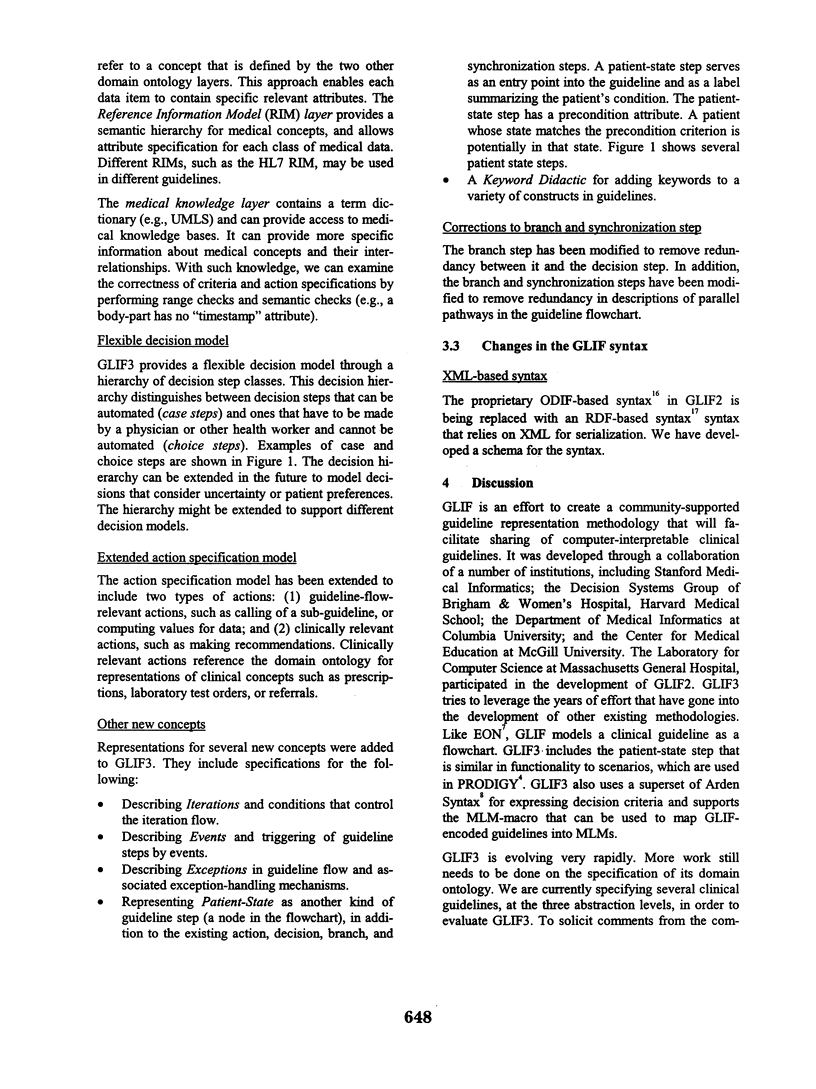Abstract
The Guideline Interchange Format (GLIF) is a language for structured representation of guidelines. It was developed to facilitate sharing clinical guidelines. GLIF version 2 enabled modeling a guideline as a flowchart of structured steps, representing clinical actions and decisions. However, the attributes of structured constructs were defined as text strings that could not be parsed, and such guidelines could not be used for computer-based execution that requires automatic inference. GLIF3 is a new version of GLIF designed to support computer-based execution. GLIF3 builds upon the framework set by GLIF2 but augments it by introducing several new constructs and extending GLIF2 constructs to allow a more formal definition of decision criteria, action specifications and patient data. GLIF3 enables guideline encoding at three levels: a conceptual flowchart, a computable specification that can be verified for logical consistency and completeness, and an implementable specification that can be incorporated into particular institutional information systems.
Full text
PDF




Selected References
These references are in PubMed. This may not be the complete list of references from this article.
- Aliferis C. F., Miller R. A. On the heuristic nature of medical decision-support systems. Methods Inf Med. 1995 Mar;34(1-2):5–14. [PubMed] [Google Scholar]
- Barratt A., Irwig L., Glasziou P., Cumming R. G., Raffle A., Hicks N., Gray J. A., Guyatt G. H. Users' guides to the medical literature: XVII. How to use guidelines and recommendations about screening. Evidence-Based Medicine Working Group. JAMA. 1999 Jun 2;281(21):2029–2034. doi: 10.1001/jama.281.21.2029. [DOI] [PubMed] [Google Scholar]
- Boxwala A. A., Greenes R. A., Deibel S. R. Architecture for a multipurpose guideline execution engine. Proc AMIA Symp. 1999:701–705. [PMC free article] [PubMed] [Google Scholar]
- Fox J., Johns N., Rahmanzadeh A. Disseminating medical knowledge: the PROforma approach. Artif Intell Med. 1998 Sep-Oct;14(1-2):157–181. doi: 10.1016/s0933-3657(98)00021-9. [DOI] [PubMed] [Google Scholar]
- Gordon C., Veloso M. Guidelines in healthcare: the experience of the Prestige project. Stud Health Technol Inform. 1999;68:733–738. [PubMed] [Google Scholar]
- Hripcsak G., Ludemann P., Pryor T. A., Wigertz O. B., Clayton P. D. Rationale for the Arden Syntax. Comput Biomed Res. 1994 Aug;27(4):291–324. doi: 10.1006/cbmr.1994.1023. [DOI] [PubMed] [Google Scholar]
- Lobach D. F., Hammond W. E. Computerized decision support based on a clinical practice guideline improves compliance with care standards. Am J Med. 1997 Jan;102(1):89–98. doi: 10.1016/s0002-9343(96)00382-8. [DOI] [PubMed] [Google Scholar]
- Ohno-Machado L., Gennari J. H., Murphy S. N., Jain N. L., Tu S. W., Oliver D. E., Pattison-Gordon E., Greenes R. A., Shortliffe E. H., Barnett G. O. The guideline interchange format: a model for representing guidelines. J Am Med Inform Assoc. 1998 Jul-Aug;5(4):357–372. doi: 10.1136/jamia.1998.0050357. [DOI] [PMC free article] [PubMed] [Google Scholar]
- Purves I. N., Sugden B., Booth N., Sowerby M. The PRODIGY project--the iterative development of the release one model. Proc AMIA Symp. 1999:359–363. [PMC free article] [PubMed] [Google Scholar]
- Shahar Y., Miksch S., Johnson P. The Asgaard project: a task-specific framework for the application and critiquing of time-oriented clinical guidelines. Artif Intell Med. 1998 Sep-Oct;14(1-2):29–51. doi: 10.1016/s0933-3657(98)00015-3. [DOI] [PubMed] [Google Scholar]
- Tu S. W., Musen M. A. A flexible approach to guideline modeling. Proc AMIA Symp. 1999:420–424. [PMC free article] [PubMed] [Google Scholar]
- Zielstorff R. D., Teich J. M., Paterno M. D., Segal M., Kuperman G. J., Hiltz F. L., Fox R. L. P-CAPE: a high-level tool for entering and processing clinical practice guidelines. Partners Computerized Algorithm and Editor. Proc AMIA Symp. 1998:478–482. [PMC free article] [PubMed] [Google Scholar]


